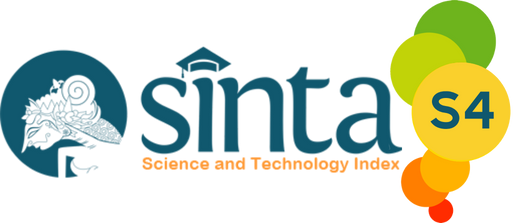The Development of Connected Learning Modules in Computer Systems and Microprocessor Electronics Subjects at 10th Grade in Vocational High School
Abstract
Keywords
Full Text:
PDFReferences
Azwar, S. (2001). Metode Penelitian. In Metodologi penelitian kualitatif (p. 21). Pustaka Pelajar.
Bali, M., & Caines, A. (2018). A call for promoting ownership, equity, and agency in faculty development via connected learning. International Journal of Educational Technology in Higher Education, 15(1). https://doi.org/10.1186/s41239-018-0128-8
Blum-Smith, S., Yurkofsky, M. M., & Brennan, K. (2021). Stepping back and stepping in: Facilitating learner-centred experiences in MOOCs. Computers and Education, 160(October 2020), 104042. https://doi.org/10.1016/j.compedu.2020.104042
Dasgupta, C., Magana, A. J., & Vieira, C. (2019). Investigating the affordances of a CAD-enabled learning environment for promoting integrated STEM learning. Computers and Education, 129(September 2017), 122–142. https://doi.org/10.1016/j.compedu.2018.10.014
Harta, I., & Lismayanti. (2014). Pengembangan Modul Pembelajaran untuk Meningkatkan Pemahaman Konsep dan Minat SMP. Pengembangan Modul Pembelajaran Untuk Meningkatkan Pemahaman Konsep Dan Minat SMP, 9(2), 161–174. https://doi.org/10.21831/pg.v9i2.9077
Laakso, N. L., Korhonen, T. S., & Hakkarainen, K. P. J. (2021). Developing students’ digital competencies through collaborative game design. Computers and Education, 174(August), 104308. https://doi.org/10.1016/j.compedu.2021.104308
Mädamürk, K., Tuominen, H., Hietajärvi, L., & Salmela-Aro, K. (2021). Adolescent students’ digital engagement and achievement goal orientation profiles. Computers and Education, 161, 104058. https://doi.org/10.1016/j.compedu.2020.104058
Milles, H. (1986). Qualitative Data Analisis (second edi). Sage Publications. https://books.google.co.id/books?hl=id&lr=&id=U4lU_-wJ5QEC&oi=fnd&pg=PA10&dq=miles+and+huberman+qualitative+data+analysis&ots=kFXz0HOQ0P&sig=A0qWGeTkv95KWlRh59lyK6Uex8I&redir_esc=y#v=onepage&q=miles and huberman qualitative data analysis&f=false
Mirra, N. (2019). From Connected Learning to Connected Teaching: Reimagining Digital Literacy Pedagogy in English Teacher Education. English Education, 51(3), 261.
Moleong, L. J. (2017). Metodologi penelitian kualitatif edisi revisi. In Metodologi penelitian kualitatif (p. 186). http://library.stik-ptik.ac.id/detail?id=7251&lokasi=lokal
Octavia, S. A. (2020). Model-Model Pembelajaran Daring. https://books.google.com/books/about/Model_Model_Pembelajaran.html?id=ptjuDwAAQBAJ
Sefton-Green, J., Watkins, S. C., Mahendran, D., Schor, J., Salen, K., Rhodes, J., Penuel, B., Livingstone, S., & Ito, M. (2013). Connected Learning Network Research. http://dmlhub.net/sites/default/files/Connected_Learning_report.pdf
Toh, W., & Kirschner, D. (2020). Self-directed learning in video games, affordances and pedagogical implications for teaching and learning. Computers and Education, 154(April), 103912. https://doi.org/10.1016/j.compedu.2020.103912
Zunaidah, F. N., & Amin, M. (2016). Pengembangan Bahan Ajar Matakuliah Bioteknologi Berdasarkan Kebutuhan Dan Karakter Mahasiswa Universitas Nusantara PGRI Kediri. Jurnal Pendidikan Biologi Indonesia, 2(1), 19–30. http://repository.um.ac.id/id/eprint/60472
Refbacks
- There are currently no refbacks.








